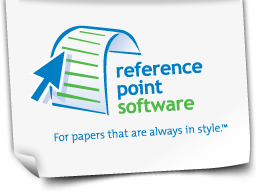Understanding the importance of ICD-10 to nursing
U.S. healthcare organizations will soon begin using ICD-10 diagnoses and procedure codes to report to Medicare, making the switch from ICD-9 procedure codes in October 2014. Nursing students are not normally interested in the details of such reporting but becoming familiar with this new coding scheme may prepare you for the richness of data that will be available and useful to researchers.
There are many thousands of ICD-10 codes but each code consists of only seven or fewer characters. The position of the character within the code defines the meaning of the code. Let’s look at an example: accidental injury caused by chickens and turkeys. While such injuries are probably not common in an urban setting this example does serve as a fun, easy-to-understand illustration of the detail available within the codes.
Consider the following ICD-10 diagnoses codes:
- W6132XA Struck by chicken, initial encounter
- W6132XD Struck by chicken, subsequent encounter
- W6132XS Struck by chicken, sequela
- W6142XA Struck by turkey, initial encounter
- W6142XD Struck by turkey, subsequent encounter
- W6142XS Struck by turkey, sequela
The first three characters are part of a chapter: External causes of morbidity (V00-Y99). That is, W61 falls within the range of V00 to Y99.
Within the chapter are subsets of codes called blocks. In this example, the block is Other external causes of accidental injury (W00-X58). Again, W61 falls within this range.
Within the block is a category. In this example W61 is the category: Contact with birds (domestic) (wild).
The next three characters are the specific diagnosis. 32 are struck by chicken, and 42 are struck by a turkey. X is a place holder used when there is no need for a digit in that position.
The last character is an extension; it further delineates the diagnosis.
- A = initial encounter
- D = subsequent encounter
- S = sequel
Encounters are with healthcare providers, not chickens or turkeys. For example ΓÇ£Struck by chicken, subsequent encounterΓÇ¥ is used when the patient returns for follow-up. ΓÇ£Struck by chicken, sequelaΓÇ¥ is a condition directly related to the initial injury, for example, a scar related to the initial injury.
A nurse in an urban setting would rarely see such injuries. But these examples illustrate the rich level of specificity that will be available in coded data. How many patients are you seeing with injuries related to chickens and turkeys? How many follow-up appointments do these patients need? What are the nursing interventions and teaching materials you will need to care for these patients? Are turkey-related diagnoses seasonal in nature?
There are many, many ICD-10 diagnoses codes; undoubtedly your area of expertise will be reflected in the codes. You can dig through CMS’s website to find the codes or find a link to all of the codes directly on our website at http://www.referencepointsoftware.com/miscfiles/ICD10CM_FY2014_Full_PDF_Tabular.zip
Reference:
Centers for Disease Control and Prevention (2014). International Classification of Diseases, Tenth Revision, Clinical Modification (ICD-10-CM). Retrieved November 18, 2013, from http://http://www.cdc.gov/
David Plaut, MS is the founder of Reference Point Software (RPS). RPS offers a complete suite of easy-to-use formatting template products featuring MLA and APA style templates, freeing up time to focus on substance while ensuring formatting accuracy. 
